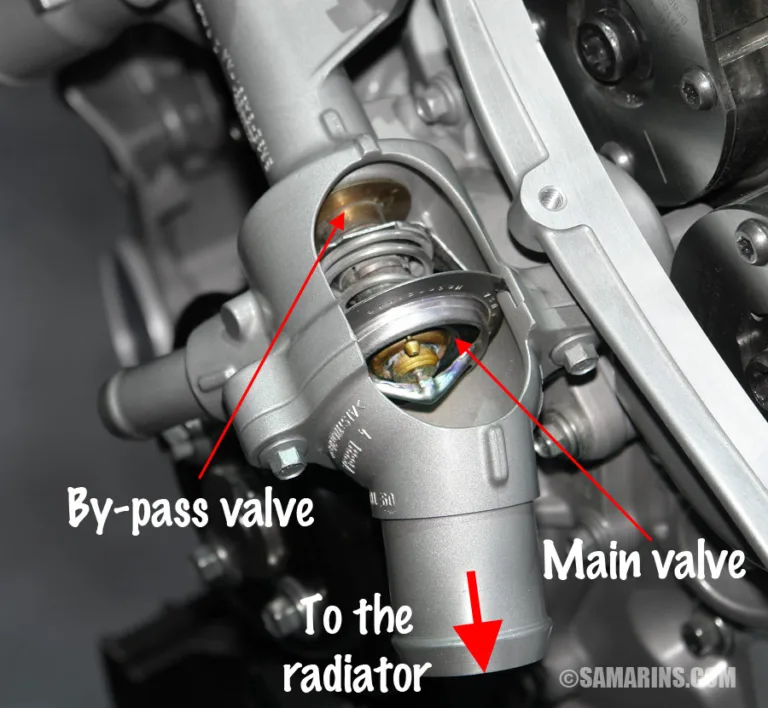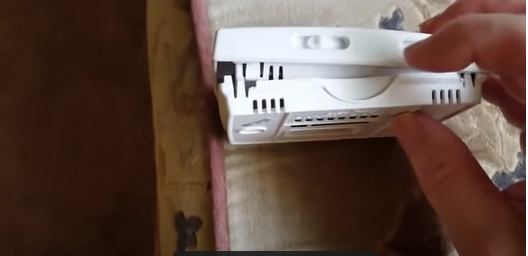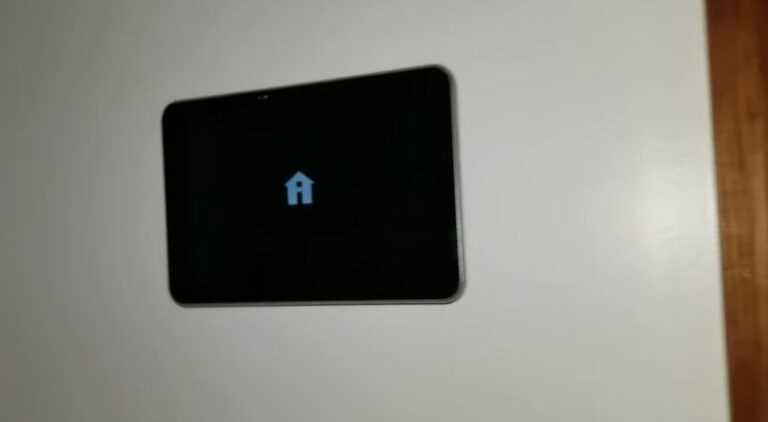Thermostat Set To 74 But Reads 78 [Causes & Fixes]
Last updated: Sept 22, 2023
If your thermostat is set to 74 but reads 78, there could be a number of reasons for this. In this guide, we explore these common issues and because we hate to leave our readers with no solutions, we ‘ll provide all possible fixes to each of the problems we’ll explore.
In general, when a thermostat is set to 74 but keeps reading 78, there could be a few things causing this problem and these include; an air exchanger that is not turned off, excessive outdoor temperatures, leaking ductwork, a wrongly placed thermostat, dirty filters and a thermostat that just needs to be reset.

Possible reasons why a thermostat reads 78 when it’s set to 74
| POSSIBLE CAUSE | MAIN FIX |
| The air exchanger is not turned off | Turn off the air exchanger |
| Exposed AC unit | Shield AC condenser unt |
| Undersized AC unit | Upgrade AC Unit |
| A thermostat that needs a restart/reset | Reset your thermostat |
| Excessive outdoor temperature | Close doors and window leading outside |
| Leaky ductwork | Seal off leaking ductwork |
| Activate automatic schedules | Deactivate auto-schedules |
| Inappropriate thermostat location | Find a neutral location for your thermostat |
| Power failure to your HVAC system | Reset tripped circuit breaker |
| Dirty air filters | Replace filter |
| Bad thermostat wiring | Check if RC wire is connected |
1) Air exchanger not turned off
A common issue that could be keeping your thermostat reading 78 degrees after lowering the temperature is an air exchange that is not turned off.
What is an air exchanger? An air exchanger helps bring fresh air into your home and take out the air from your home to the outside.
But an air conditioner works by dehumidifying the air and cooling it.
What that means is that the cooling effect of the air conditioner could be canceling with the warm air that the air exchanger is bringing in and is probably why your air conditioner is not cooling below 78.

The fix
The easiest and quickest solution to this issue is to switch off the air exchanger and try running the ac. If your air exchanger is turned off or you don’t have one but your thermostat keeps reading 78 degrees, then let’s go to the following troubleshooting steps.

Read also: Nest Thermostat Blowing Cold Air on Heat
2) A thermostat that needs a reset.
This is a no brainer issue but you’ll be surprised by how many times a simple thermostat reset will solve all sorts of thermostat problems.
Resetting your thermostat depends on the make and model you have. Please refer to the user manual on how to reset your thermostat.
Read also: What temperature should air be when coming out of vents
3) AC unit exposed to sunlight
Ensuring that your outdoor AC unit remains in the shade or is shielded from direct sunlight can significantly impact its cooling efficiency. When exposed to the sun, the external unit absorbs a considerable amount of heat, making it harder for the system to cool your home to the desired temperature. Here’s how to address this issue:
Shading the Outdoor Unit:
Build a Shade Fence: Construct a small fence around your outdoor AC unit to block the sun’s direct rays. Opt for lattice work, which offers shade while allowing adequate airflow. Ensure the fence is positioned a few feet away from the unit to prevent obstruction.
Maintain Airflow
It’s crucial to strike a balance between shade and airflow. Too much shade without proper ventilation can hinder your AC’s performance. The lattice work fence strikes this balance effectively.
Additional Tips for Optimal Cooling:
Clean Metal Fins: Regularly clean the metal fins surrounding your AC unit. Use a spray nozzle on your hose to remove dust and debris, ensuring unobstructed airflow.
Sprinkler Cooling: During the hottest parts of the day, consider using a sprinkler to cool the unit. Position the sprinkler to lightly spray water on the AC unit while avoiding excess moisture. This can help lower the temperature of the air entering your home by a few degrees.
4) The outdoor temperature is too high
A common reason why your thermostat keeps reading 78 when you have set it to 74 is that the outdoor temperature is too high.
Air conditioners are designed to cool the air by a difference 20 degrees from the air outside.
However, when your region is experiencing an entirely high temperature, say 100 degrees, then your thermostat will only be able to cool down to about 80 degrees.
The fix
There are, however, a few things that can help you to bring the temperature down.
Try turning off heat producing appliances such as TVs and stoves. If possible, go and braai the food outdoors or use an outdoor kitchen if you have one.
Try closing the doors and the windows that are leading to the outside. This is because as your air conditioner works hard to cool your home, hotter from outside will come into your home and prevent your ac from cooling to your desired temperature.
5) Undersized AC Unit
An undersized air conditioning unit is a common reason why an AC system may struggle to cool a space to the desired temperature. This occurs because the AC unit lacks the capacity to effectively remove heat from the indoor environment. Here’s how it happens and how to address it:
Inadequate Cooling Capacity: An undersized AC unit is not powerful enough to handle the heat load in the room. When the thermostat is set to a specific temperature, the AC runs continuously but can’t keep up with the heat entering the space, resulting in the temperature not reaching the desired level.
Solution:
Upgrade to a Properly Sized Unit: Consult with an HVAC professional to determine the correct size of AC unit needed for your space. They will consider factors like room size, insulation, and heat-generating appliances. Replacing the undersized unit with the right-sized one will improve cooling efficiency and comfort.
Improve Insulation and Seal Leaks: Ensure your space is well-insulated and windows and doors are sealed properly to minimize heat infiltration, which can ease the load on the AC unit.
6) Leaking ductwork
Now this is another common issue for AC systems falling to cool down to the set temperatures. Leaking ductwork will prevent air conditioners from cooling to the desired temperature and the reason is simple.
Leaking ducts will allow cooler air to escape and warmer air to come in. So, the warmer air will mix with the cooler air before it reaches your room.
That could be the reason for your thermostat not cooling down to the set 74 degrees.
The fix
Inspect your ductwork thoroughly for any leaks if you can. If you find leaks which are by the way common in joints, seal them off and test if the problem is resolved.
Alternately, if you can’t do this alone, call for professionals for help,
Read also: Braeburn Thermostat keeps Resetting To 85 [Fixed]
7) Check for active schedules on your thermostat
Depending on the brand, some thermostat can prevent you from changing temperature when they are on automatic schedule. Check your thermostat for any schedules.
The fix
Disable auto schedule. Auto schedules on your thermostat can also be removed by resetting your thermostat. Try turning on the thermostat again and check if the problem is resolved
8) Check the location of your thermostat.
Thermostats are sensitive to any changes in their surroundings. That means that the location of your thermostat can affect the temperature reading.
For example, when the thermostat is located near the window and it is exposed to the sun, it will take wrong readings, and this will mean more cooling and more energy bills.
On the other side, if the temperature is located near the vents, it will record lower temperatures that will mean less cooling and uncomfortable high temperatures for your home.
The fix
If you believe your thermostat is t located in a good location and is affecting the temperature readings, relocate it.
Ideally position your thermostat on the first floor and away from heat-emitting appliances such as the stove and avoid placing them near vents.
9) Power failure to your HVAC system
If your thermostat is reading 78 no matter how much you try to set it at 74, there could be a problem with power supply to your HVAC system.
The outdoor condenser unit helps with the cooling of your HVAC system, and it does this with the help of the Freon running through the coils and the blower fan that blows away the heat.
If the condenser unit is not working either due to power failure or for whatever reason, then your thermostat won’t come down to your set temperature.
The fix
Check whether or not the outdoor condenser unit is working and if it doesn’t kick on when you turn on your ac, ensure that there are no tripped circuit breakers.
Another problem that can fail a condenser is a compressor capacitor or a defective blower motor. These can be checked by a HVAC technician
10) Dirty filters
Air filters play one of the most important roles in a HVAC system. Underestimating the role filters play can cause serious problems with a HVAC system.
Dirty filters cause all sorts of problems and one of them is preventing your AC from reaching the set temperatures.
In other words, dirty filters could be the reason your thermostat won’t go below 78 degrees.
The fix
Check the status of your filter and if you find that they are dirty consider replacing them. It’s also worth noting that air filters need to be replaced at 1-2 months as recommended by many ac manufacturers.
11) Check your thermostat wiring
If your thermostat can’t come down to your set point, there could be something wrong with your thermostat wiring.
On most thermostats if the RC wire is not connected or was just loosely connected then you can not have cooling in your home. RC wire is power for cooling.
The fix
Check if all wires are tightly connected to their respective terminals but give them a little tug. If the RC wire looks dirty, clean it and insert it back into the terminal. Then try running your system again.
Read also: Honeywell Thermostat Blowing Cold Air on Heat Setting
Conclusion
While there could be other reasons why your thermostat reads 78 when it is set to 74 degrees, the above reasons are the most common ones.
And as we have always recommended, it’s better to consult HVAC professionals if you can not fix the problems yourself.

![AC High Pressure Line Hot Or Cold? [Here is the Fix]](https://thermostating.com/wp-content/uploads/2022/11/ac-pressure-guage-768x395.png)


![Honeywell Purge Light Blinking? [Solved]](https://thermostating.com/wp-content/uploads/2023/03/true-zone-jpg.webp)
![Nest Thermostat Low Battery Message Problem [Fixed]](https://thermostating.com/wp-content/uploads/2023/05/nest-resetting-low-battery-768x397.jpg)